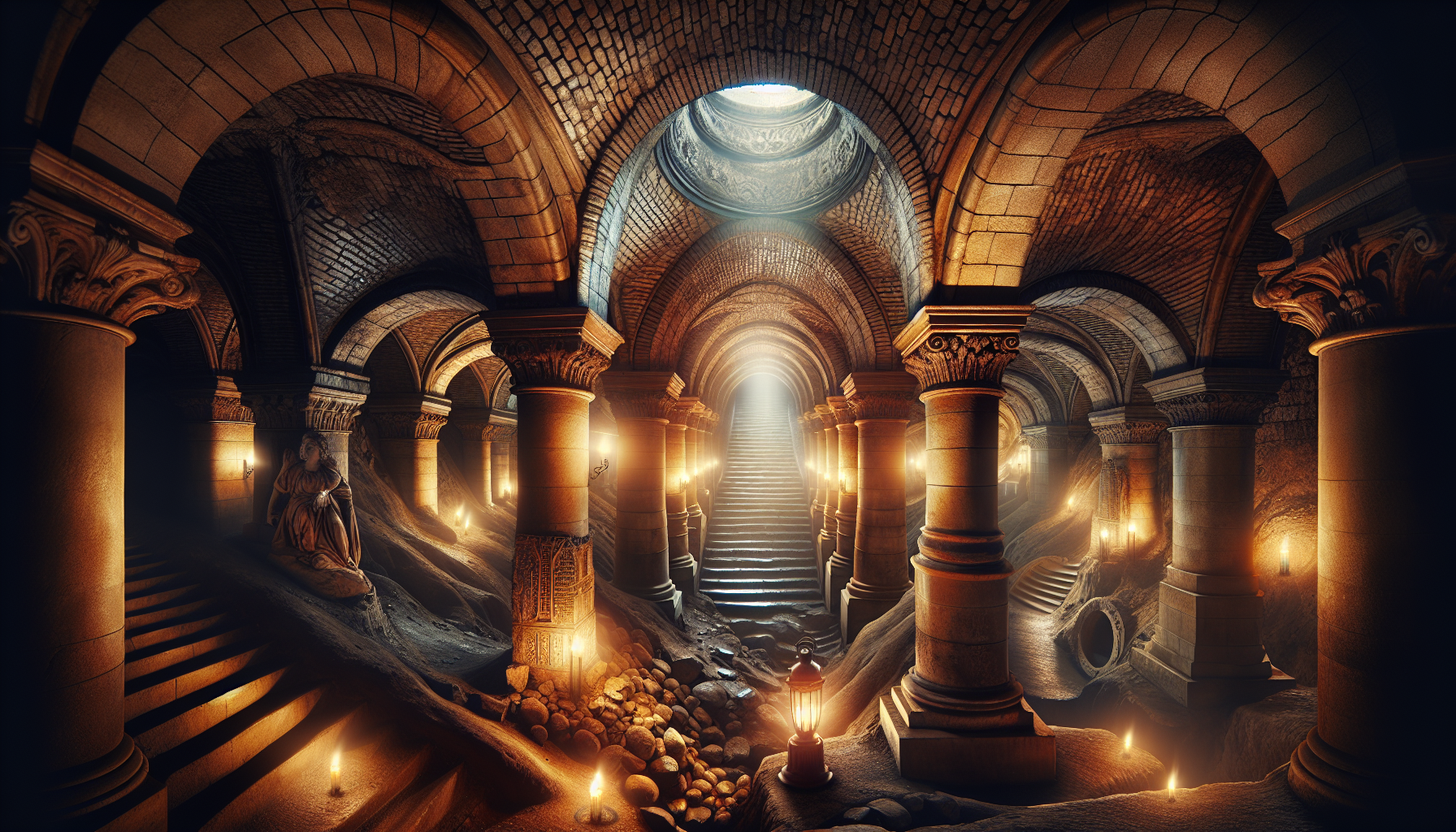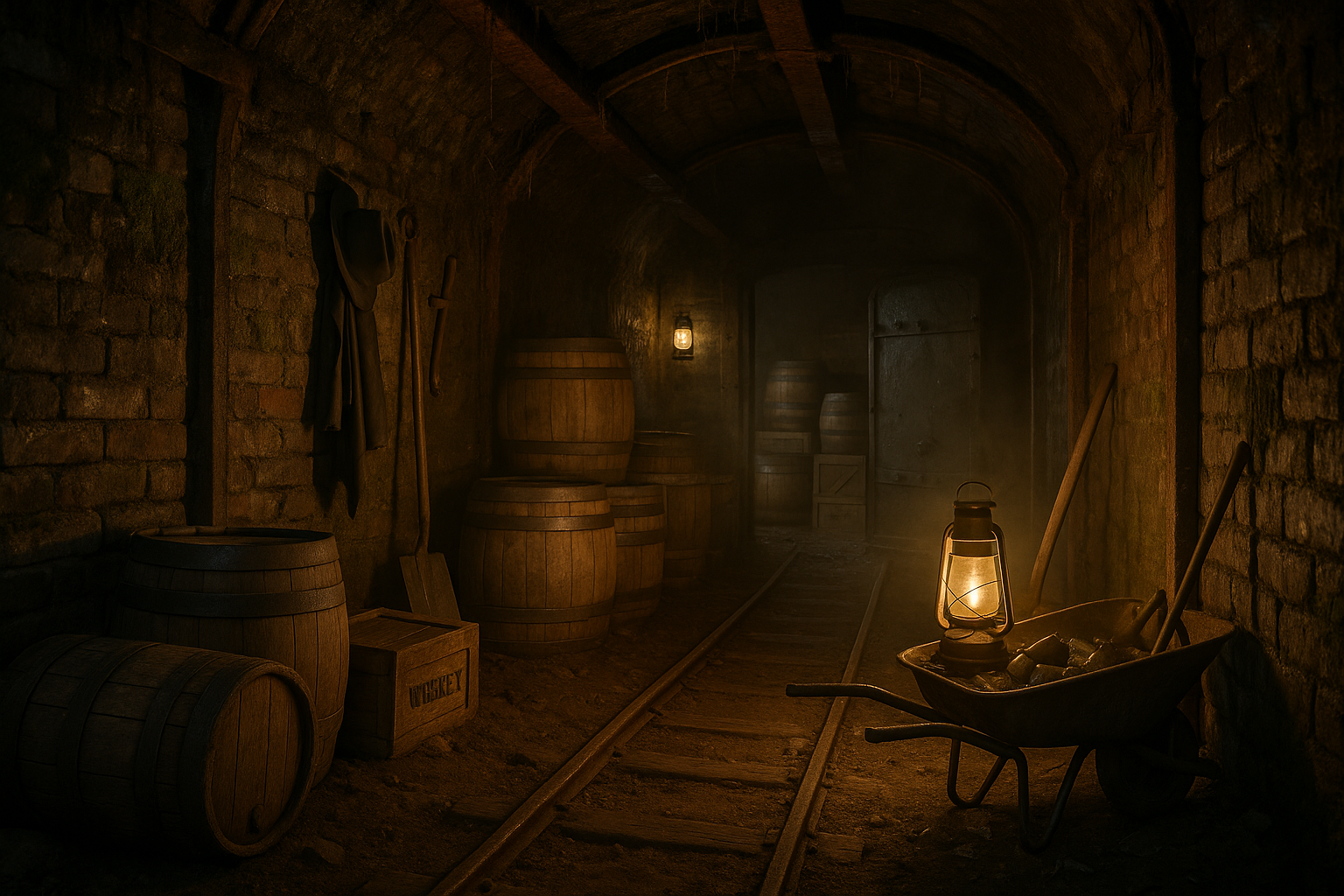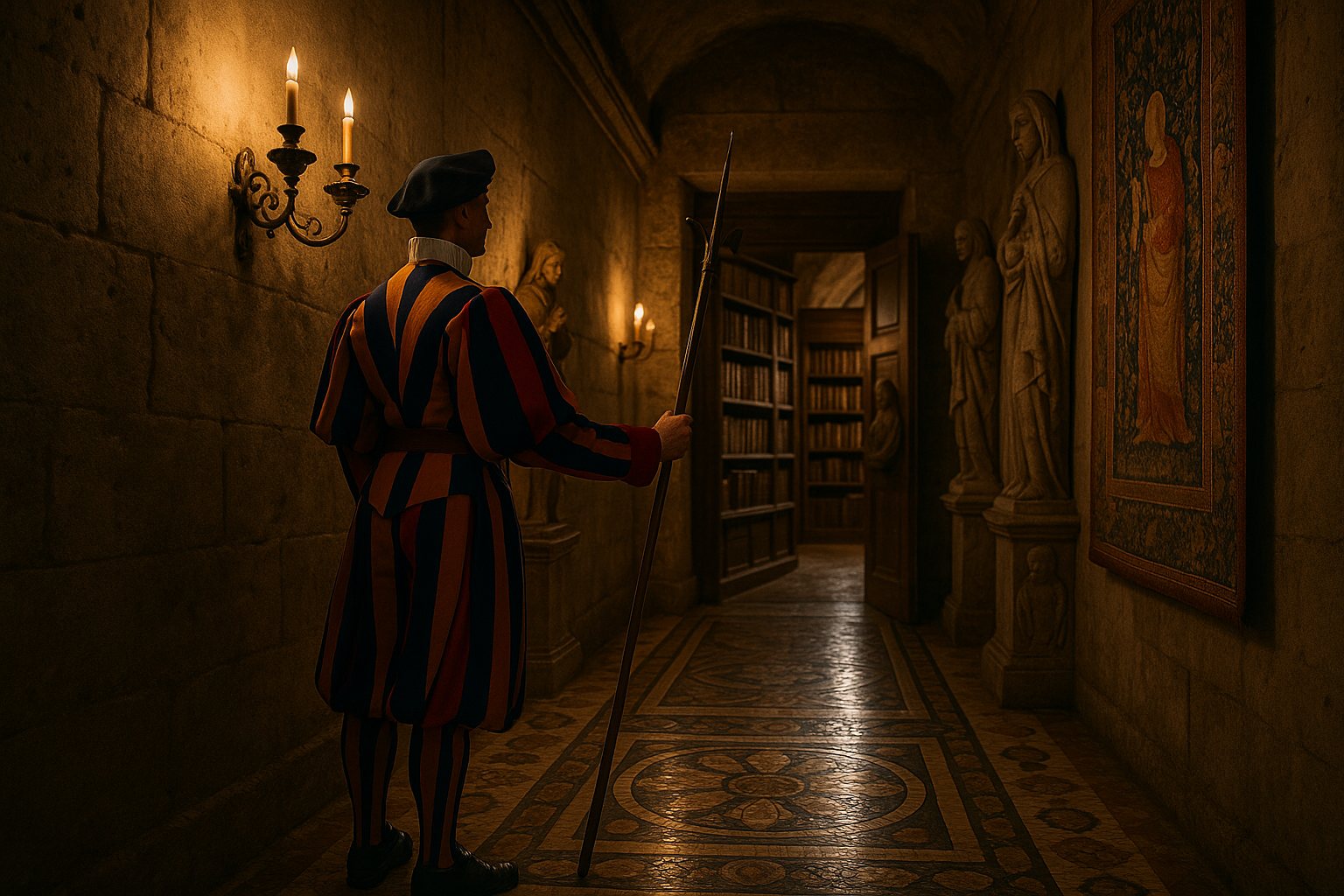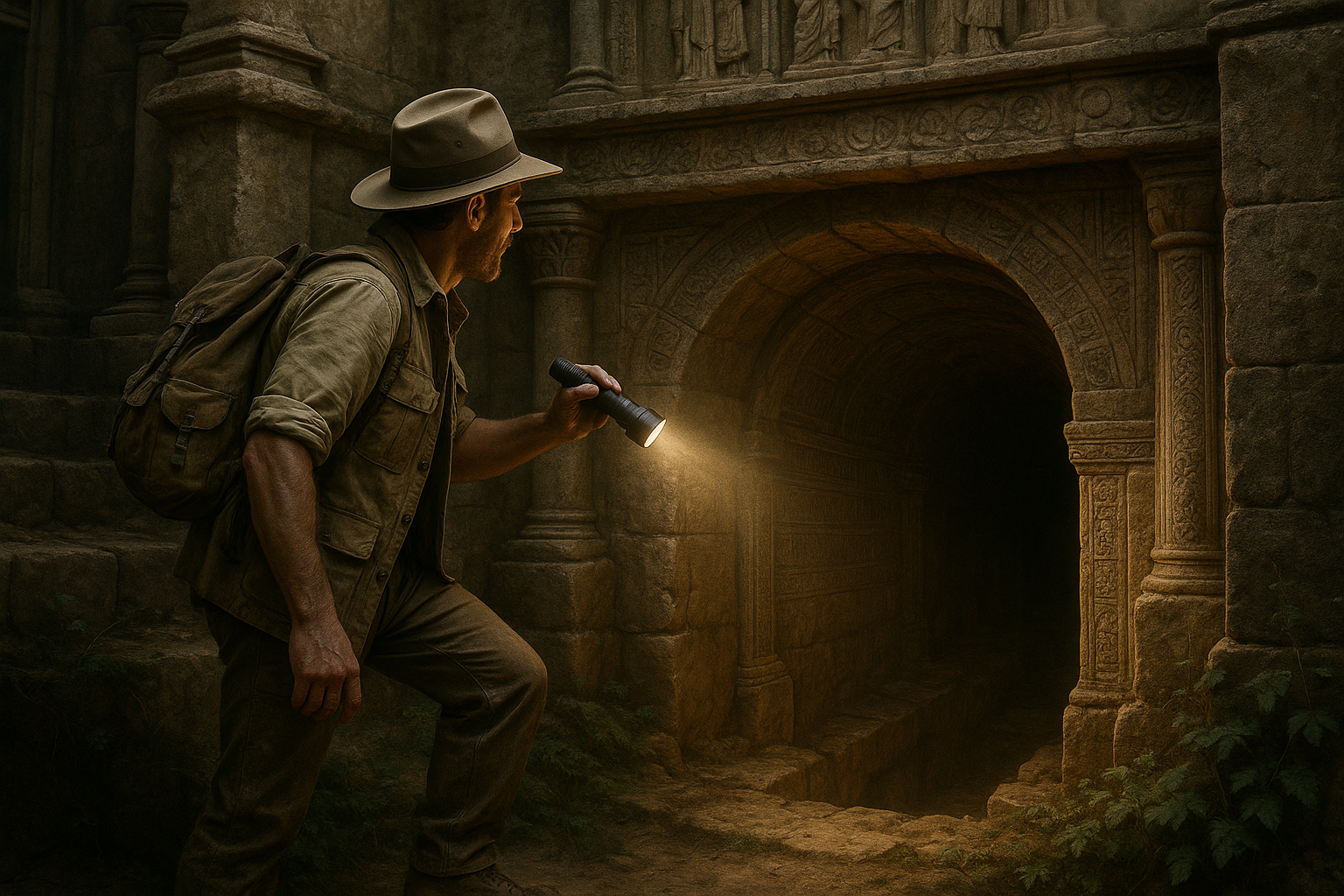Beneath the bustling streets of Paris, the City of Light conceals a labyrinth of mysteries that remain largely unseen by the throngs of tourists who flock to its iconic landmarks. While the Eiffel Tower and the Louvre capture the imagination of millions, there is an underground world waiting to be discovered, one that tells tales of history, intrigue, and the resilience of human spirit. This article invites you to journey beneath the surface, to explore the secret structures that lie hidden under Paris, and to uncover the wonders that have been shrouded in darkness for centuries. 🌌
Paris, known for its romantic charm and artistic allure, holds within its subterranean depths an enigmatic network of catacombs, tunnels, and forgotten relics. The city’s underground world is as rich and complex as its surface, interwoven with stories of revolutionaries, resistance fighters, and visionary architects who have all left their mark beneath the cobblestones. As we delve deeper, you’ll discover how these hidden wonders offer a unique perspective on the city’s history, revealing a side of Paris that is seldom seen yet profoundly significant. From the eerie allure of the catacombs, lined with the bones of millions, to the clandestine meeting spots of the French Resistance, each underground site has a story to tell.
In this exploration, we will navigate the intricate maze of the Paris Métro, which is more than just a means of transportation. It’s a living museum that chronicles the evolution of the city through its art, architecture, and engineering marvels. We will venture into the lesser-known ossuaries and crypts, where the whispers of the past echo through the stone walls, and examine how these spaces have been repurposed over time to serve new generations. These hidden chambers hold not just the remains of the departed but also the secrets of a city that has continually reinvented itself. 🏰
The Allure of Paris: Beyond the Surface
Paris, a city renowned for its breathtaking architecture, exquisite cuisine, and rich cultural heritage, often reveals only a fraction of its true essence to those who traverse its bustling streets. Beneath the iconic landmarks and romantic boulevards, a hidden world thrives in the form of secret structures and underground passages. These clandestine marvels not only encapsulate the historical and architectural legacy of Paris but also embody the mystery and allure that attract adventurers and historians alike. Embarking on a journey through these secretive locales unveils stories of revolution, refuge, and romance, interwoven into the very fabric of Parisian history.
From the hauntingly beautiful catacombs lined with millions of skeletal remains to the clandestine meeting spots of the French Resistance, the underground of Paris is a labyrinthine wonderland. Each corridor and chamber tells a tale, whispering secrets of the past to those who dare to explore its depths. This subterranean city is not just an architectural marvel but also a testimony to the resilience and resourcefulness of the Parisians through centuries of upheaval and change.
Join us as we delve into this mysterious underworld, exploring the secret structures that lie beneath the surface of Paris. Whether you are a history enthusiast, an architecture aficionado, or simply a curious wanderer, the stories and sights that await below are sure to captivate and inspire. As you navigate this article, you’ll find tables comparing the various underground sites, links to intriguing videos that bring these stories to life, and calls to action to immerse yourself further in the hidden wonders of Paris.
The Catacombs: A Chilling Yet Fascinating Journey
One of the most famous subterranean attractions in Paris is the Catacombs, a vast network of tunnels and chambers that house the remains of over six million people. This ossuary was created in the late 18th century to address the city’s overflowing cemeteries and has since become a symbol of Paris’ macabre yet intriguing history. The journey through the catacombs is both chilling and fascinating, offering a stark contrast to the vibrant life above ground.
Exploring the catacombs is akin to stepping into a different world, where the air is heavy with the weight of history, and the walls whisper tales of lives long past. The experience is immersive, drawing visitors into the depths of Parisian history in a way that few other sites can. Each corridor is lined with carefully arranged bones, creating a hauntingly beautiful tapestry that pays homage to those who once walked the streets of Paris.
For those interested in the technical aspects, the catacombs also serve as a remarkable feat of engineering. Originally part of the limestone quarries that supplied the stone for many of Paris’ buildings, these tunnels have been transformed into a meticulously organized ossuary. As you wander through the dimly lit passages, take a moment to appreciate the artistry and precision that went into creating this subterranean masterpiece.
To get a sense of the eerie yet captivating allure of the catacombs, check out this video from the channel “Exploring with Josh” titled “Exploring the Paris Catacombs” for a virtual tour of this unique site. You can find it here.
The Underground Legacy of the French Resistance
Beneath the surface of Paris lies a hidden network of tunnels and bunkers that played a crucial role during World War II. These secret structures served as hideouts and operational bases for the French Resistance, a group of brave individuals who fought against the Nazi occupation. Their efforts were instrumental in the liberation of Paris, and their legacy lives on in the underground passages that once sheltered them.
These clandestine sites provide a unique glimpse into the history of the French Resistance, offering insights into their strategies and the challenges they faced. As you explore these hidden chambers, you can’t help but feel a sense of awe at the bravery and ingenuity of those who fought against overwhelming odds. The stories of their courage and determination are etched into the very walls of these underground sanctuaries, serving as a poignant reminder of the resilience of the human spirit.
For a more comprehensive understanding of the underground operations of the French Resistance, you may want to check out a fascinating video titled “Paris Under Siege: The French Resistance” from the channel “History Hit.” This video provides an in-depth look at the tactics and triumphs of the Resistance fighters during this tumultuous time.
Comparing the Catacombs and Resistance Tunnels
While both the catacombs and the resistance tunnels offer a glimpse into the hidden history of Paris, they differ significantly in their origins, purposes, and experiences. The catacombs, with their eerie beauty and somber atmosphere, provide a stark reminder of the city’s past, while the resistance tunnels are a testament to the courage and ingenuity of those who fought for freedom. Understanding these differences can enrich your exploration of these fascinating underground structures.
| Aspect | Catacombs | Resistance Tunnels |
|---|---|---|
| Origin | Limestone quarries turned ossuary in the late 18th century. | Secret hideouts and operational bases during World War II. |
| Purpose | To alleviate overcrowding in Paris’ cemeteries. | To support the activities of the French Resistance. |
| Experience | A hauntingly beautiful journey through a vast ossuary. | A glimpse into the history of the French Resistance and their fight for freedom. |
As you can see from the table, while both locations offer a unique experience, the catacombs are more about the somber beauty of history, whereas the resistance tunnels focus on the heroic narrative of wartime Paris. Each offers a different perspective on the city’s rich history, making them both worthy of exploration for anyone interested in uncovering the hidden wonders of Paris.
Exploring Parisian Sewer System: The Unsung Hero
Beneath the romantic streets of Paris lies another fascinating and often overlooked marvel: the Parisian sewer system. This intricate network of tunnels and waterways is a testament to the city’s commitment to sanitation and public health. The sewer system, which dates back to the 19th century, not only played a vital role in shaping modern Paris but also continues to serve as a crucial part of the city’s infrastructure.
The history of the Parisian sewer system is a tale of innovation and progress. In the mid-1800s, Paris faced a public health crisis due to its inadequate sanitation infrastructure. In response, visionary engineer Eugène Belgrand spearheaded the development of a comprehensive sewer system that revolutionized urban sanitation. This monumental project not only improved public health but also set a precedent for modern sanitation systems worldwide.
Exploring the Parisian sewers offers a unique perspective on the city’s history and development. Visitors can take guided tours through these subterranean passageways, gaining insights into the engineering marvels that have kept the city running smoothly for over a century. The tours also highlight the evolution of Parisian infrastructure, showcasing the innovative solutions that have been implemented to address the challenges of urban living.
To get a closer look at the engineering marvel that is the Parisian sewer system, you might enjoy watching the video “Inside the Paris Sewers” by the channel “Seeker.” This video provides a fascinating glimpse into the complex network that lies beneath the city streets.
Modern-Day Exploration: Cataphiles and Urban Adventurers
The allure of Paris’ underground has not gone unnoticed by modern-day adventurers and explorers, commonly known as cataphiles. These urban explorers are drawn to the mystery and intrigue of the subterranean world, seeking out hidden passageways and forgotten chambers beneath the city. The cataphiles have formed a tight-knit community, sharing knowledge and tips for navigating the complex maze of tunnels and chambers that lie beneath Paris.
While the allure of exploration is undeniable, it’s important to note that unauthorized entry into the Parisian underground is illegal and can be dangerous. The labyrinthine nature of the tunnels, combined with the potential for structural instability, poses significant risks to those who venture into these secret spaces without proper guidance. However, for those who are determined to experience the thrill of underground exploration, there are legal and safe ways to do so through guided tours and sanctioned events.
Urban exploration in Paris is not just about adventure; it’s also about preserving and documenting the history and stories of the city’s hidden structures. Many cataphiles take on the role of amateur historians, researching and recording the details of the underground world to ensure that these stories are not lost to time. Their efforts contribute to a greater understanding of Paris’ history and serve as a reminder of the enduring allure of its hidden wonders.
- The catacombs: A hauntingly beautiful ossuary.
- Resistance tunnels: A testament to courage and resilience.
- Parisian sewer system: An engineering marvel.
For those interested in joining the ranks of urban adventurers, it’s essential to prioritize safety and legality. Engaging with the cataphile community and participating in guided tours can offer a safe and enriching experience, allowing you to explore the hidden wonders of Paris without compromising your safety or the integrity of these historical sites.

Conclusion
Exploring the hidden wonders beneath Paris is like peeling back layers of history to reveal a tapestry of stories, engineering marvels, and cultural significance that have shaped the city into what it is today. This exploration into the secret structures beneath Paris has taken us through an array of fascinating topics, each one more intriguing than the last. We have journeyed through the historical context, examining how these subterranean networks came into existence, delved into the architectural feats that have made these underground structures possible, and marveled at the unique subcultures that have developed in these hidden spaces.
The historical overview provided a foundation for understanding why Paris has such an intricate network of underground tunnels and chambers. Dating back to Roman times, these structures have served various purposes—from quarries providing the stones that built Paris, to the catacombs where the bones of over six million Parisians rest. The evolution of these spaces over time highlights the city’s adaptability and its people’s resourcefulness in utilizing the space beneath their feet for both practical and symbolic purposes.
Architecturally, the underground of Paris is a testament to human ingenuity and determination. The engineering prowess required to create these subterranean networks, particularly given the technology available at different historical periods, is nothing short of extraordinary. From the meticulous planning and execution of the catacombs to the expansive metro system that whisks millions of residents and tourists across the city daily, these structures exemplify the remarkable intersection of necessity and creativity.
Culturally, the hidden wonders beneath Paris offer a different perspective on urban life. They are not just relics of the past but active spaces that continue to influence the cultural landscape of the city. From clandestine gatherings and art installations to the vibrant community of cataphiles who explore these spaces today, the underground is a living, breathing entity that challenges our perceptions of space, history, and community.
The importance of this exploration extends beyond mere curiosity. It invites us to reflect on the layers of history that lie beneath our cities, often unnoticed and unappreciated. These underground structures are silent witnesses to the past, telling stories of resilience, innovation, and cultural evolution. They remind us that there is more to a city than what meets the eye and that understanding these hidden elements can offer a richer, more nuanced appreciation of the urban environment.
In conclusion, uncovering the hidden wonders beneath Paris is not just an exploration of physical structures but a journey through time, culture, and human achievement. It inspires us to look beyond the surface and consider the complex narratives that lie beneath our feet. We are encouraged to continue this exploration, whether through further reading, visiting these sites, or simply sharing this knowledge with others.
As you reflect on the hidden treasures of Paris’s underground, consider the stories beneath your own city. What histories lie beneath the streets you walk every day? Engage with your community, share your insights, and invite others to explore the unseen wonders around them. In doing so, we not only preserve these stories but enrich our understanding of the world.
Let’s keep the conversation going! Share your thoughts, insights, and any experiences you may have had exploring the hidden layers of cities. Encourage your friends and family to delve into this fascinating topic, and who knows? You might just uncover a hidden wonder of your own! 🌍✨
For further exploration, consider checking out Atlas Obscura’s guide to Paris’s underground or The Paris Review’s article on the catacombs.
Toni Santos is a visual storyteller and artisan whose work explores the quiet power of what lies beneath. With a deep fascination for subterranean and hidden architecture, Toni uncovers the layers, voids, and forgotten spaces that shape our built environment from the shadows.
His art is a journey through the unseen — from ancient underground chambers to sealed passageways, service tunnels, and foundations buried in time. Each creation tells a story of silence, secrecy, and structure — revealing how absence and concealment can be just as meaningful as what’s visible above ground.
Whether working through visual compositions, architectural studies, or symbolic handcrafted pieces, Toni captures the soul of hidden spaces. His work bridges art and archaeology, blending design with discovery. Trained in visual design and traditional techniques, Toni creates with intention. His pieces don’t just depict — they interpret, inviting viewers to rethink what space, memory, and architecture mean when they’re hidden from view.
As the creative force behind Vizevex, Toni shares this perspective through curated visual narratives, symbolic collections, and interpretive essays that give voice to the quiet geometries beneath our feet.
His work is a tribute to:
The mystery of spaces built to be forgotten
The symbolism embedded in foundations, voids, and passageways
The timeless connection between human intention and hidden structure
Whether you’re an artist, an urban explorer, or someone fascinated by the unseen frameworks that support our world, Toni invites you into a realm where architecture becomes myth — one corridor, one layer, one buried story at a time.





